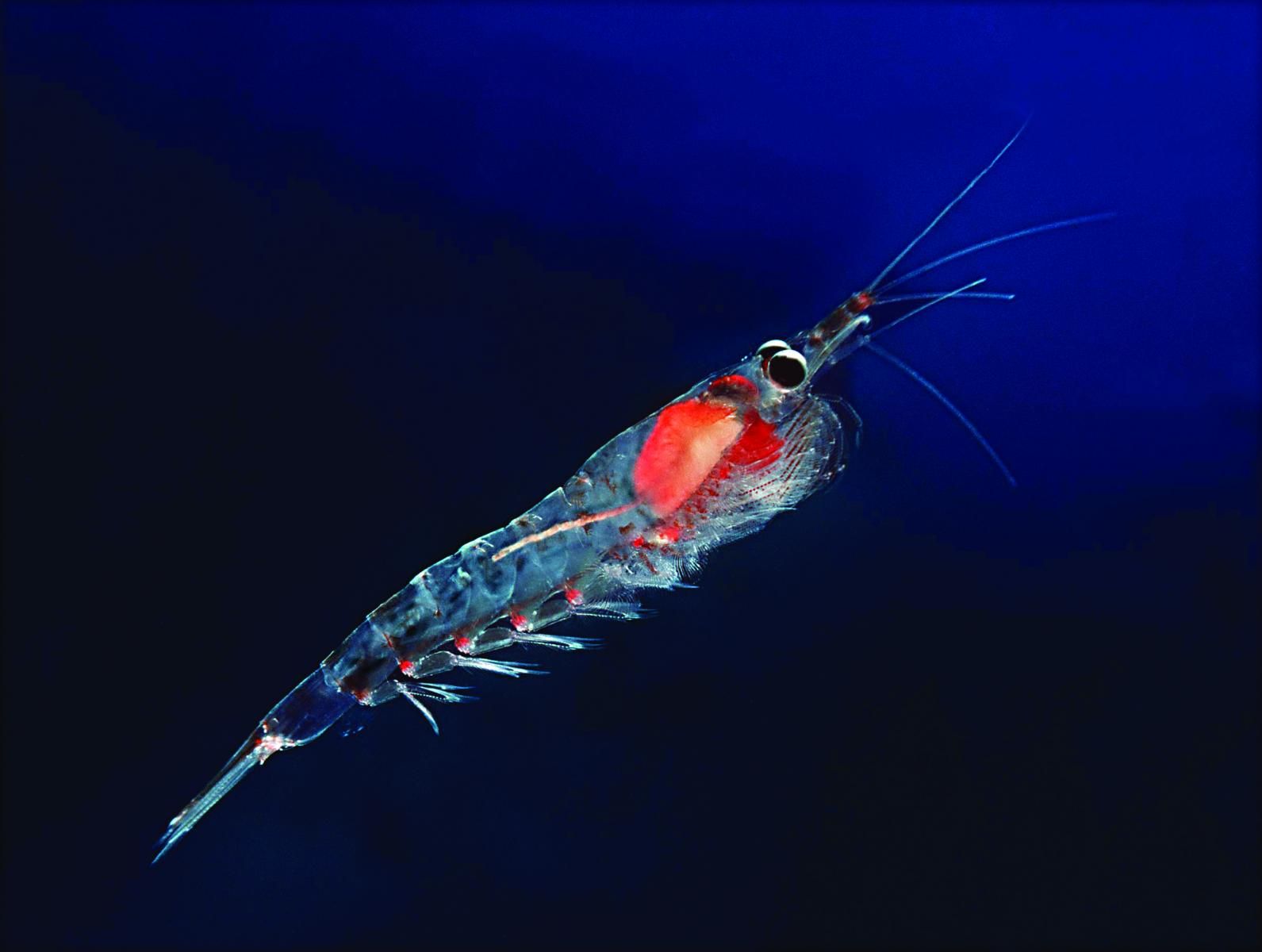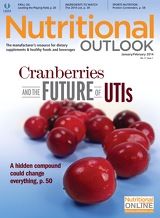How Will USP’s New Krill Oil Monograph Help Industry?
USP, as well as krill oil suppliers, weigh in on how the standards will help level the krill oil playing field.

December is here, and with it, a new monograph for krill oil (Euphausia superba) by the U.S. Pharmacopeial Convention (USP; Rockville, MD). Now published in USP’s Food Chemicals Codex (8th edition), the monograph aims to level industry krill oil standards. USP, as well as krill oil suppliers, weighed in on how the monograph will help promote quality krill oil identification and purity testing. (This article is a follow-up to a story on the monograph written by USP and published in Nutritional Outlook’s October 2013 issue.)
Read USP’s own take on the new monograph.
Phospholipids
A key monograph feature is methods to identify and quantify a krill oil’s phospholipid sources. Suppliers often tout krill oil’s high phospholipid content, including EPA and DHA fatty acids in phospholipid form, claiming that the phospholipid form is highly bioavailable. However, some questionable companies have spiked krill oil with phospholipids derived from non-krill sources. As with any ingredient, as demand grows, market adulteration by outliers becomes a growing risk. Recent estimates show that, while krill oil still accounts for a smaller slice of the omega-3 pie, it is also one of the fastest-growing ingredients in the sector.
USP’s monograph uses NMR test methods-P31-NMR (Phosphorus Nuclear Magnetic Resonance and Proton Nuclear Magnetic Resonance)-which USP says lets manufacturers identify what types of phospholipids are present in an oil and how much there is of each source. Other quality standards on the market have not included these tools for differentiating and quantifying phospholipid sources, including phosphatidylcholine.
“Phospholipids are a very important component of krill oil, and the relative amounts and types of phospholipids present are characteristic of the ingredient; thus, this test provides important information about samples as well as helps to establish the identity of the sample as authentic krill oil,” USP’s Kristie B. Laurvick, PhD, senior scientific liaison for food, dietary supplements, and herbal medicines, tells Nutritional Outlook.
Gai Ben Dror, vice president, process development, for K-Real krill oil supplier Enzymotec (Migdal HaEmeq, Israel), says his company advocates the pNMR method for measuring phospholipids. He says the method was added to the monograph at the urging of industry companies during the monograph’s comment period. “pNMR [has been] used by our company for more than a decade, and it is the best tool to resolve complex mixtures of naturally occurring phospholipids,” he says. (In December, an Enzymotec human clinical study comparing a higher bioavailability of K-Real krill oil to fish oil was published in Lipids in Health and Disease.)
Overall, USP’s monograph recommends total krill oil phospholipid content in the range of 28%-52% and a total phosphatidylcholine content range of 60%-90%. If these ranges seem high, USP’s Laurvick says it is necessary in order to accommodate expected differences, all of which can vary krill composition. “Because the range should encompass samples from different [fishing] seasons, samples from different times in the same season, samples processed under various manufacturing conditions, and sources of analytical bias in the extraction and testing of the phospholipids content, it is not surprising that such a seemingly wide range of specifications is required,” she says.
Astaxanthin
Astaxanthin is another krill oil component that can vary between suppliers. USP’s standard recommends an astaxanthan content not less than 100 mcg/g.
Why do astaxanthin levels tend to vary so much? USP’s Laurvick explains. “Levels of astaxanthin reported in commercial products have been quite a bit more variable, partially based on the processing conditions of the krill, but also based on the analytical methodology used to measure the astaxanthin and the means of reporting its concentration, either as ‘free’ astaxanthin or as esters,” she says.
Wael Massrieh, PhD, vice president, scientific affairs, for NKO krill oil supplier Neptune Technologies and Bioressources Inc. (Laval, QC, Canada), says his company believes that free astaxanthin should comprise very little of krill oil. He points out that free astaxanthin is more prone to oxidation because it not “protected" by the attached fatty acids, and it has a different solubility profile, which may decrease bioavailability.
Massrieh says the astaxanthin assay in USP’s monograph measures total astaxanthin as free astaxanthin. But, he adds, USP's monograph does include a secondary assay that can pinpoint the ratio of diesters to monoesters, meaning that it can differentiate between astaxanthin from different sources, such as synthetic, algae, and krill sources.
EPA, DHA, and Contaminants
The monograph sets standards for DHA and EPA fatty acid content as well. For DHA, recommended krill oil composition is not less than 5.0%; for EPA, not less than 10.0%. Laurvick says these percentages are fairly industry standard.
Finally, the monograph sets limits for heavy metal contaminants: not more than 0.1 mg/kg for arsenic, lead, and mercury.
More Transparency for Consumers
The monograph should help provide tools against what Neptune’s Massrieh calls low-tier products “claiming to be krill oils simply because they are a red, omega-3 oil. These are the oils that sometimes contain no phospholipids and/or [contain] astaxanthin from external sources.”
“We know for certain that some oils have been sold as mixtures with added fatty acids and astaxanthin,” Laurvick adds. “While it is perfectly acceptable for a manufacturer to sell a product that has added ingredients intended to enhance the characteristics or functionality of the krill oil (properly labeled), our monograph is written in such a way that these added ingredients would be detected, as would undeclared additions of fatty acids, phospholipids, and astaxanthin from other sources. We believe that the monograph will help define a quality krill oil ingredient where no definition of such was previously available.”
How will these standards translate to the consumer at retail? And can we expect to see more-standardized krill oil labels in commerce? We asked Laurvick. She said that the monograph does include a labeling provision for declaring amounts of DHA and EPA in an ingredient, including DHA and EPA from other oils used to standardize the ingredient. “This type of standardization is common with oil products, in particular, and should be disclosed so that users understand how the standardization may affect the analysis of the krill oil,” she says.
Additionally, Laurvick says, the monograph suggests the disclosure of the types and levels of extraction solvents used that may be present in a krill oil post-manufacture.
Laurvick says, “While the FDA does not require manufacturers to conform to Food Chemicals Codex labeling requirements, manufacturers who wish to sell oils that conform to Food Chemicals Codex monograph specifications will be required to do so in order to provide more complete information to their customers.”
“The new monograph does provide more definition to the identification of krill oil than is found on current commercial product specifications,” says Becky Wright, communications and marketing manager for Aker BioMarine Antarctic US (Oslo, Norway), supplier of Superba krill oil. “This should help better characterize a quality, pure krill oil material.”
“It will become useful if it sets a clear and uniform assay to measure the active ingredient levels and a standard way to report them so that the end-consumers can properly compare products,” adds Enzymotec’s Dror.
Harry Rice, PhD, vice president of regulatory and scientific affairs for the Global Organization for EPA and DHA Omega-3s (GOED; Salt Lake City), says, “As I see it, the monograph should go a long way to prevent the selling of inferior krill oil. It levels the playing field, and that's good for the honest manufacturers as well as consumers.”

The Nutritional Outlook Podcast Episode 36: Best of the Industry Service Provider, Radicle Science
December 26th 2024Nutritional Outlook's managing editor, Sebastian Krawiec, interviews Radicle Science co-founders, Pelin Thorogood and Jeff Chen, MD. Radicle Science has been selected as this year's Best of the Industry, Service Provider.